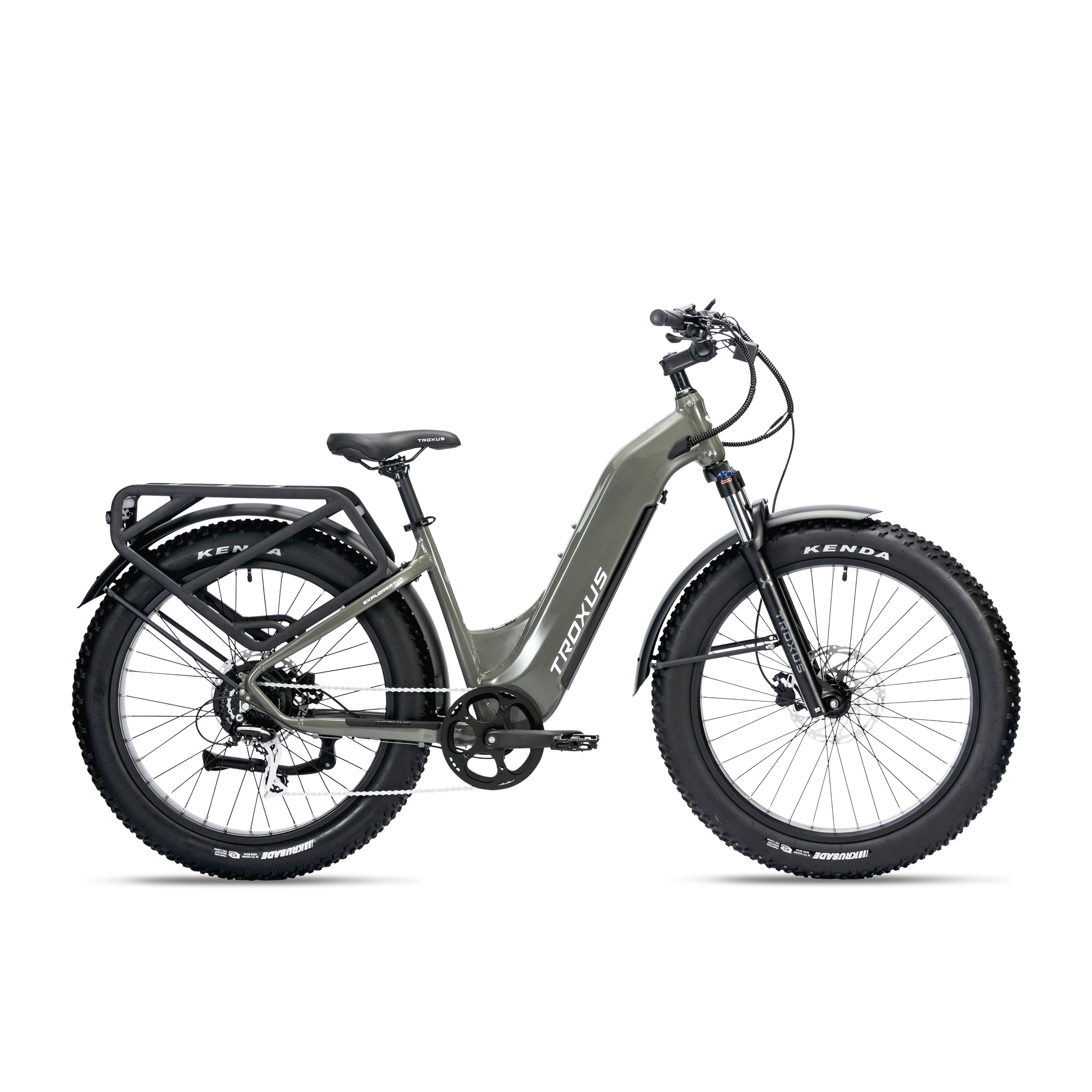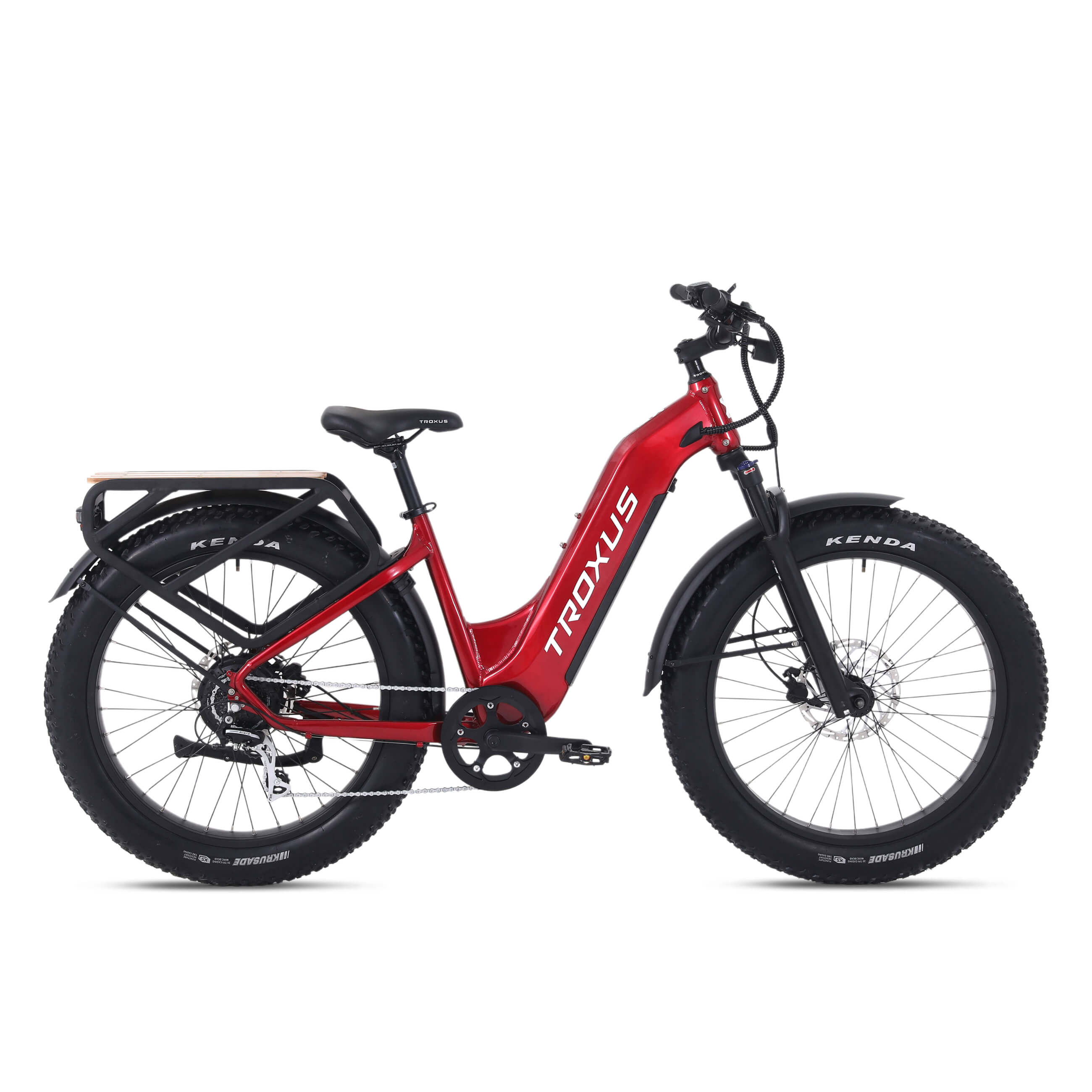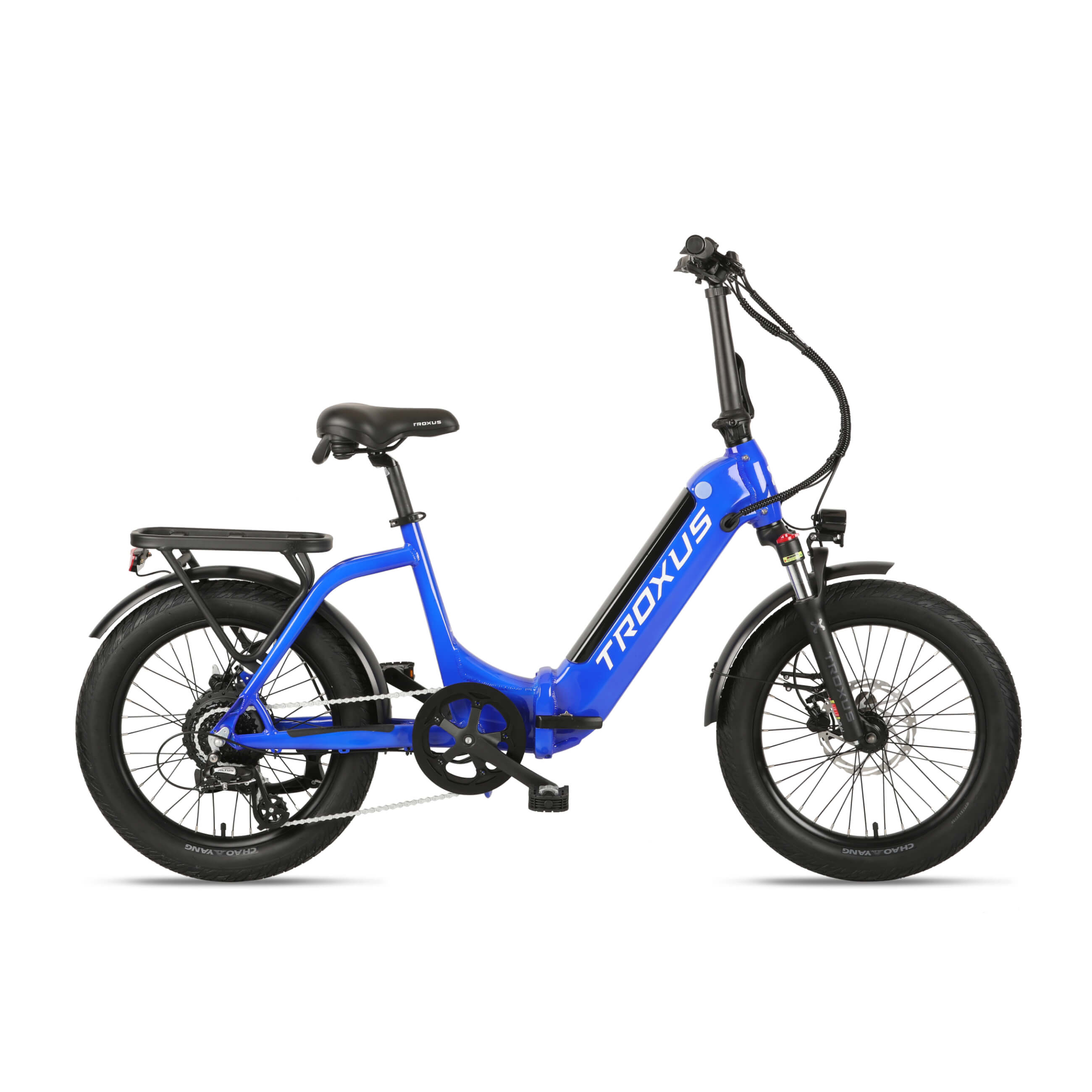Introduction
For the average rider, it is best to carry out a basic but comprehensive safety check on the ebike before each long distance ride. Check at least once a week if you ride regularly. (If you have your own technician to check it for you, you can ignore this article.)
With the rising popularity of ebikes among sustainable commuters, outdoor adventurers, and cycling enthusiasts, understanding proper maintenance is more important than ever. One essential pre-ride ritual to adopt is the "M" check method—a systematic approach to inspecting your ebike. The "M-shaped" test outlined in this article can help you identify possible problems with your bike in an organized and memorable manner. This method is equally applicable to electric road vehicles, electric mountain bikes, newly bought electric bicycles, daily cycling electric bicycles, and electric bicycles that have not been ridden for a long time. Are you ready to hit the road on your ebike? Before you set off on your next adventure, it's crucial to ensure your ride is safe and sound.
Content
Check the Front Wheels, Brakes, and Drum
Check the Ebike's Shock Absorber
Check the Ebike Head Tube and Handle Group
Check the Rear Wheels and Drivetrain
Finally Summarize the "M" Check Again
What is the "M" Check?
The "M" check is a comprehensive safety inspection method that follows an "M" pattern across the ebike. This method includes checking the front, middle, and rear of your bike. By following this pattern, you can easily remember all the critical components to check before hopping on your ebike.
M inspection is a set of inspection methods designed for the basic safety and performance of bicycles. Start from the front flower drum, move up along the front fork, then move backward, pass through the frame, and finally check the rear flower drum one by one, draw the shape of the letter M, you can go through the main working parts of the electric bicycle, and complete the inspection of the vehicle. This method ensures that every critical component of your ebike is checked before you ride. From the front wheels to the rear drivetrain, the "M" check covers it all.
This method can help you quickly check for various problems with the main parts of your bike. After proficiency, it only takes a few minutes to thoroughly inspect an electric bicycle.
Below is a brief description of each step of the M-check.
Check the Front Wheels, Brakes, and Drum

Your ebike’s front wheels, brakes, and drum are pivotal to ensuring a smooth and safe ride. Start by spinning the front wheel to check for any wobbling or unusual resistance. A misaligned wheel can lead to unstable rides, so it's essential to ensure it spins freely and straight.
First check whether the wheel set is fixed firmly.
In recent years, the most commonly used wheel lock method on the electric bicycle is to use the quick release or barrel shaft.
If your e-bike uses a quick release, first relax and open the quick release, then push the lever down, then turn the nut on the other side of the quick release until the nut is snug on the front fork (or the rear fork of the frame). Then, open the quick disassembly, and then screw the nut in a circle or so. Now your wheel set is securely locked in the hook of the front fork (or rear fork of the frame) without being too tight.
When doing this inspection and adjustment, placing the electric bicycle on the ground can better ensure that the wheel is centered, rather than standing on the repair frame or professional workbench.
The barrel shaft usually runs through the entire drum from the front fork side and is threaded to the opposite front fork or back fork. Before riding, make sure the barrel shaft is securely locked according to the manufacturer's instructions.
After locking, shake the wheel set to both sides to check whether the state of the flower drum is good, whether there is open or lateral shaking.
Turn the wheel set, if there is a creaking noise, or sounds very rough rotation sound, then you may need to maintain or replace the bearing.
Next, examine the front brakes.
Squeeze the brake levers and check for immediate and firm engagement. Worn brake pads can diminish stopping power, putting you at risk. If the pads are thin or unevenly worn, replace them immediately.
When you turn the wheel, check that the brake edge of the brake disc or rim does not rub against the brake clamp. If you do, you need to adjust the clamp or the entire brake system.
Finally, squeeze the brake handle to make sure the brakes are working properly. If you find that your oil pressure disc brake feels soft. Then it might need to be filled with oil.
If you are using a line pull disc brake, feel feel is not quite right, not as crisp as before, then you may need to adjust the tension of the brake line, or replace the brake pad.
Lastly, inspect the drum (if applicable) for any signs of wear or damage.
Ensure it’s securely attached and rotates smoothly. Regularly checking these components can prevent accidents and keep your ride safe.
Check the Ebike's Tire
The tires need to be properly mounted on the rims. Check the edge of the tire in contact with the rim. Make sure the edges of the tire look uniform everywhere. If something is wrong, it needs to be removed and reinstalled.After completing the inspection of tire installation. Next you need to check the tire contact pattern and side wall for excessive wear and damage. It is very dangerous to use tires that are worn or have damage such as cracks, and if you notice any doubt or uncertainty on the tires, we recommend replacing them.
Unlike car and motorcycle tires, electric bicycle tires do not have fixed replacement rules and obvious replacement indication marks. So you need to decide for yourself whether you need to change the tire. For electric road car tires, if you find that some places have been worn flat, or some places the rubber is starting to fall off, then you are pretty sure that the tire needs to be replaced. For electric mountain bike tires, the bumps on the tires gradually disappear as they wear out. If the bump wear is already very severe, then the tire is no longer usable for the electric mountain bike.
If you are using a vacuum tire system and have not ridden this ebike for a while. Then you need to open the tire a bit to see if the self-replenishing fluid of the vacuum tire has dried up.
Although the inner tube will slowly leak over time. But if one day you suddenly find that your electric bicycle tire is completely out of air, it is likely to be caused by the puncture of the tire, not caused by time. Don't go out with a full tank of gas, after all, you don't want to stop halfway through the ride to deal with a flat tire. So take some time to solve this problem before you go.
You also need to get the right air pressure on your tires before you ride. Different models such as electric road bikes and electric mountain bikes, including the different roads you are going to ride on, the optimal tire pressure will be different.
Your tires are the only contact point between your ebike and the road. Ensuring they’re in top condition is vital. Also, ensure the tires are properly inflated to the recommended pressure. Under-inflated tires can make pedaling harder, while over-inflated tires can be prone to bursting.
Check the Ebike's Shock Absorber
Your ebike’s shock absorbers play a crucial role in providing a comfortable ride by absorbing bumps and vibrations. Start by pressing down on the front forks and rear shocks. They should compress and rebound smoothly without any creaking or stiffness.
Check your front fork for hair-like cracks or other forms of damage. If you use a damper front fork, check the inside tube of your damper front fork for scratches and oil leaks around the oil seals and sealing tights.
A small amount of grease on the inner tube of the front fork is a normal phenomenon, and there is no need to worry too much. If you are using an oil/gas structure with front/rear shock absorbers, check the preload Settings about once a month. A well-maintained suspension system enhances comfort and control, making your rides more enjoyable and safer.
Related Content:
- Tips for maintaining front wheels, brakes, and drum:
- Regularly clean debris from brake pads and rims
- Check for proper alignment of brake calipers
- Inspect and replace worn or damaged brake pads
- Keep the drum lubricated to prevent rusting
By regularly maintaining your electric bike's wheels, brakes, and tires, you can ensure a safer and more enjoyable riding experience. Remember to always consult the manufacturer's instructions before attempting any repairs or adjustments. And if in doubt, seek professional assistance from a qualified mechanic.
In addition, consider investing in a maintenance kit specifically designed for electric bikes to make the process even easier. With regular care and maintenance, your electric bike will provide years of reliable use.
Check the Ebike Head Tube and Handle Group
The head tube and handle group are essential for steering and control. Start by checking the headset for any looseness. Hold the front brake and shake the front fork back and forth with the front brake pinched to check the bowl set for a significant amount of relaxation. If the whole ebike will vibrate in this way, you can determine whether the vibration comes from the amount of the bowl group by putting your finger close to the joint of the frame.
Next lift the front wheel and slowly turn the handlebar. If there is significant friction or resistance when rotating, then your bowl set needs to be maintained or even replaced.
Inspect the handlebars for any damage or cracks. Ensure they’re securely fastened and aligned correctly. Misaligned handlebars can affect your steering and balance. Clamp the front wheel with your knees and try to turn the handlebar to check that the handlebar is properly and firmly fixed. If your risers are fastened correctly, you can twist the handlebars with considerable force without the risers spinning on the front fork tube.
Finally, check the handlebar grips and controls. They should be tight and responsive, ensuring you can control the ebike effectively. Stand straddling the upper tube of the e-bike and twist the bars forward and back, while trying to hold the lower bars down if your e-bike uses a bend bar. Properly locked bars do not move.
At the same time, the brake bars, hand changes, finger-shifting and other components installed on the bars are reliably locked on the handlebars.
Frame Inspection
The frame is the backbone of your ebike, supporting all other components. Start by visually inspecting the entire frame for any cracks, dents, or signs of damage. paying special attention to the weld area if it is a metal frame, as these are common points of failure. Even if you find even a tiny hair-like crack, you need to have it checked by a professional before you ride.
Check the frame alignment by ensuring both wheels are in line. Misalignment can affect handling and stability. If you notice any issues, it’s best to consult a professional for repairs. If your frame is equipped with a rear shock absorber, check the mounting screws of the shock absorber to ensure that the shock absorber is properly and reliably installed on the frame. At the same time test whether the shock absorber is working properly.
Furthermore, check that the various accessories of the frame (such as the kettle holder, etc.) are installed correctly and will not creak. A sturdy frame ensures the overall integrity of your ebike, giving you peace of mind on your rides.
Check Dental Discs and Pedals
The dental discs (or chainrings) and pedals are crucial for power transfer. Start by inspecting the chainrings for any wear or damage. Worn teeth can cause the chain to slip, reducing efficiency and potentially causing accidents. Turn the crank back so it doesn't bring the rear wheels with it. Determine whether the transmission system runs smoothly, and also determine whether the state of the five passes and the central shaft is good.
Check the gear disc for damage, missing teeth, or excessive wear. Overworn teeth are similar in shape to shark fins.
Shake the crank to the left and right sides of the e-bike to check whether there is any resistance or slack in the connection between the crank and the frame. If you feel a stretch, you may need to replace the center shaft.
Check the pedals for smooth rotation and any signs of damage. Ensure they’re securely attached to the crank arms. Loose pedals can affect your pedaling efficiency and control. Turn your pedals. A well-maintained pedal will not rotate freely without damping, because the thickly lubricated grease will hinder the rotation of the pedal. Use the same method as the front and check the wheel crank to check for open volume by shaking the pedals. Any of the previous problems need to be repaired or replaced.
Check that the pedals are properly and reliably mounted on the crank. If you use the lock step, please check whether the metal or plastic lock plate of the lock shoe has excessive wear, whether the bolt is firmly fixed, and whether the locking force and unlocking force of the lock step meet your Settings. Regularly maintaining the chainrings and pedals ensures a smooth and efficient ride.
Check the Seat Tube Cushion

Your ebike’s seat tube cushion ensures a comfortable ride. Start by checking the seat post for any signs of wear or damage. Ensure it’s securely clamped and doesn’t slide down during rides. Remove the seat bar from the frame regularly for cleaning and maintenance.
If it is a metal part of aluminum, titanium or steel, it is OK to apply some grease before reinstallation. If you use a carbon frame or a carbon seat rod, then you need to use a slip inhibitor for carbon fiber. This anti-slip agent is also a paste, similar to grease, but containing small particles that increase friction between components.
Inspect the saddle for any tears or damage. A damaged saddle can cause discomfort and affect your riding posture. Adjust the saddle height and angle to suit your comfort and riding style. If not properly maintained on a regular basis and the seat rod gets stuck, then your frame is dead, so be sure not to skip this step.
After setting the correct seat height and reinstalling the seat cushion, we need to check that the seat cushion is firmly installed on the seat clamp. A well-maintained seat tube cushion enhances comfort and reduces fatigue on longer rides.
Check the Rear Wheels and Drivetrain
The rear wheels and drivetrain are critical for propulsion and control. Start by spinning the rear wheel to check for any wobbling or unusual resistance. Ensure it’s securely attached and spins freely. Repeat the various operations on the front wheels to check the rear wheels, and check the amount, efficiency, friction, and wear of the tires, tires, and brakes.
Inspect the drivetrain components, including the chain, cassette, and derailleur. A clean and well-lubricated drivetrain ensures smooth shifting and efficient power transfer. Look for any signs of wear or damage, and replace components as needed. Turn the crank by hand and check the rotation of the chain to make sure that no chains are frozen and cannot turn each other. Go through the gears once to make sure the gears are up and down properly. If you use electronic transmission, be sure to confirm that the power is sufficient before riding out, if there is no indication, you are not sure, it is best to charge a charge in advance.
Each shift shift should correspond to a movement of the chain. If the chain is not moving, slow, hesitant, or out of gear, then you need to adjust your shift.
Regular pre - and post-ride checks are important. At the same time, understanding your e-bike is equally key, and knowing your bike better means you can spot problems when they arise, or even avoid them before they occur.
Pay attention to your electric bike for abnormal mechanical noise, creaking frame, and various anomalies while riding, and check it as soon as possible. Regularly maintaining the rear wheels and drivetrain keeps your ebike running smoothly and efficiently.
Finally Summarize the "M" Check Again
To recap, the "M" check is an essential part of maintaining your e-bike's performance and safety. It involves checking the frame, dental discs and pedals, seat tube cushion, rear wheels and drivetrain for any wear or damage. Regularly performing these checks and properly maintaining your bike ensures a safe and enjoyable ride every time.

Front of the Bike
- Begin with a visual inspection of the front wheel, tire pressure, and brake pads.
- Check for any loose bolts or screws on the handlebars, stem, and fork.
- Ensure that the headset is tight and secure.
Middle of the Bike
- Examine the frame for any signs of damage or cracks.
- Test both brakes to ensure they are functioning correctly.
- Check that all cables and wires are securely attached and not frayed.
- Inspect the battery for any damage or corrosion.
Rear of the Bike
- Check the rear wheel, tire pressure, and brake pads.
- Look for any loose bolts or screws on the seat post, saddle, and rear rack.
- Verify that the chain is lubricated and tensioned correctly.
Remember to always inspect your e-bike before and after each ride, pay attention to any abnormalities while riding, and address them promptly to prevent potential accidents. Stay knowledgeable about your e-bike by regularly checking and understanding its components. Taking good care of your e-bike will not only prolong its lifespan but also enhance your overall riding experience.










